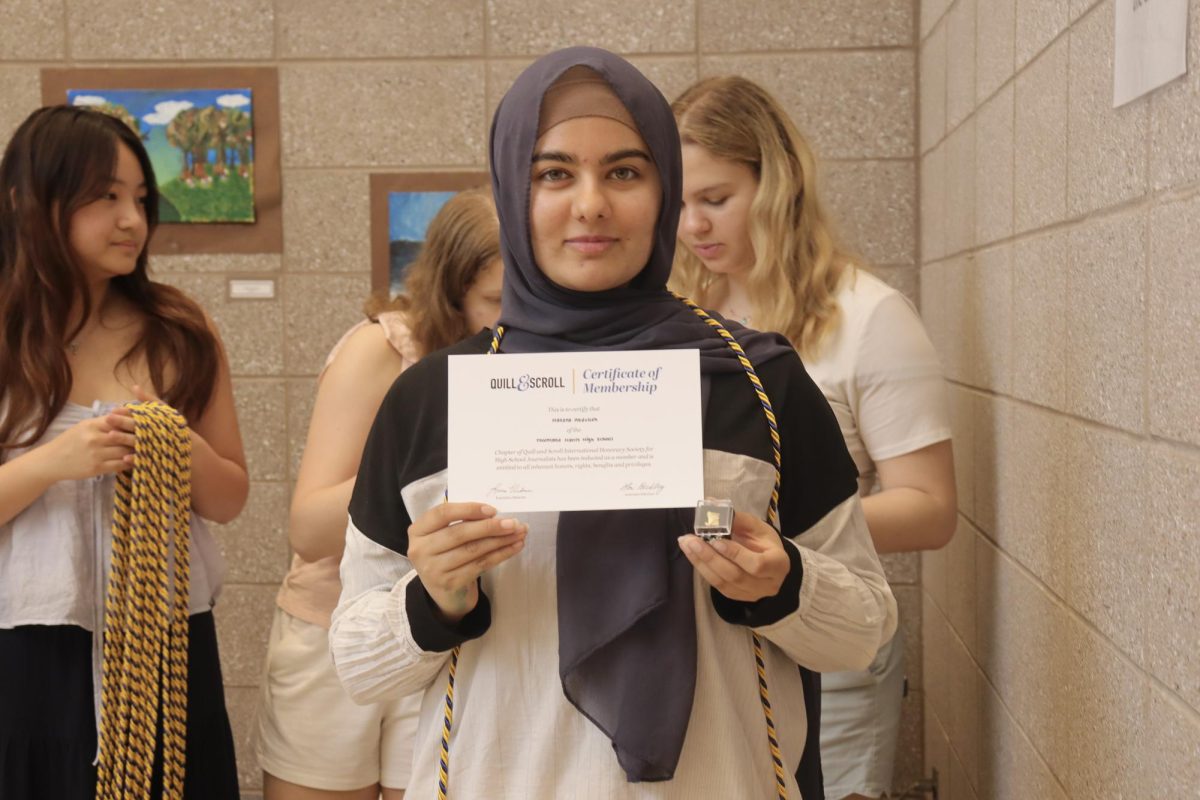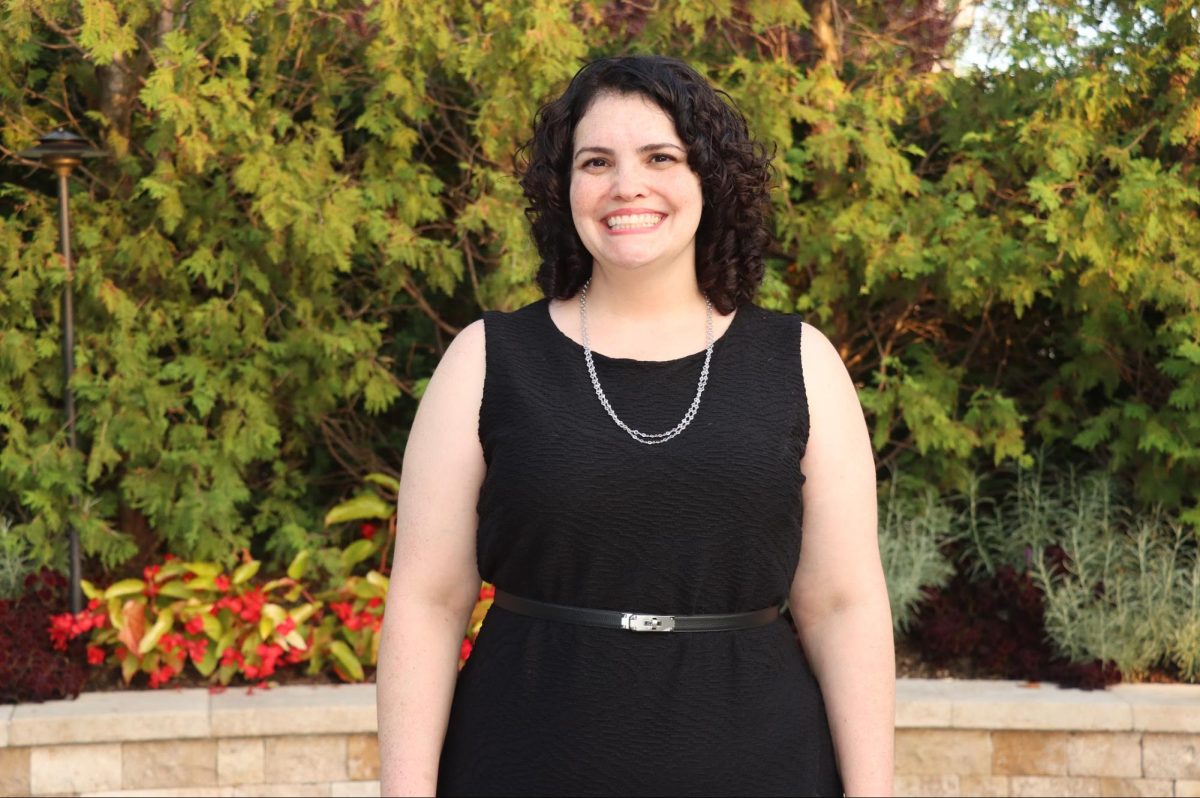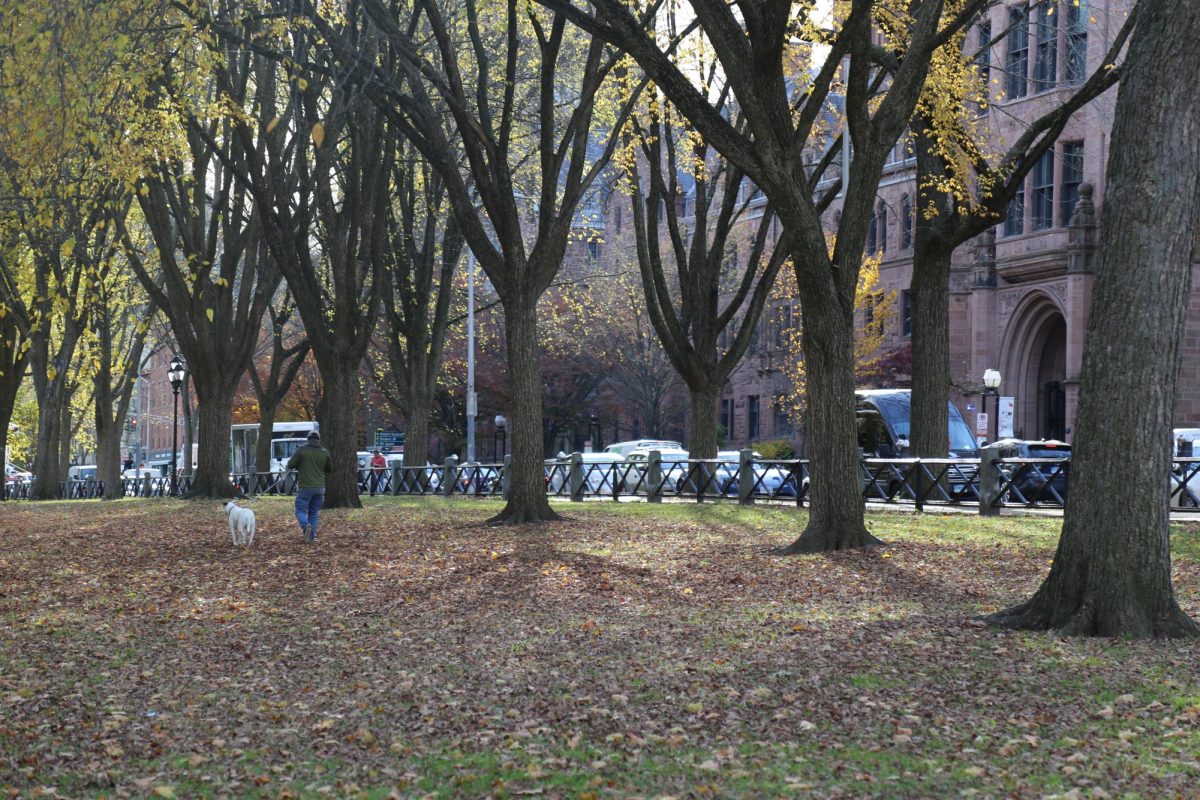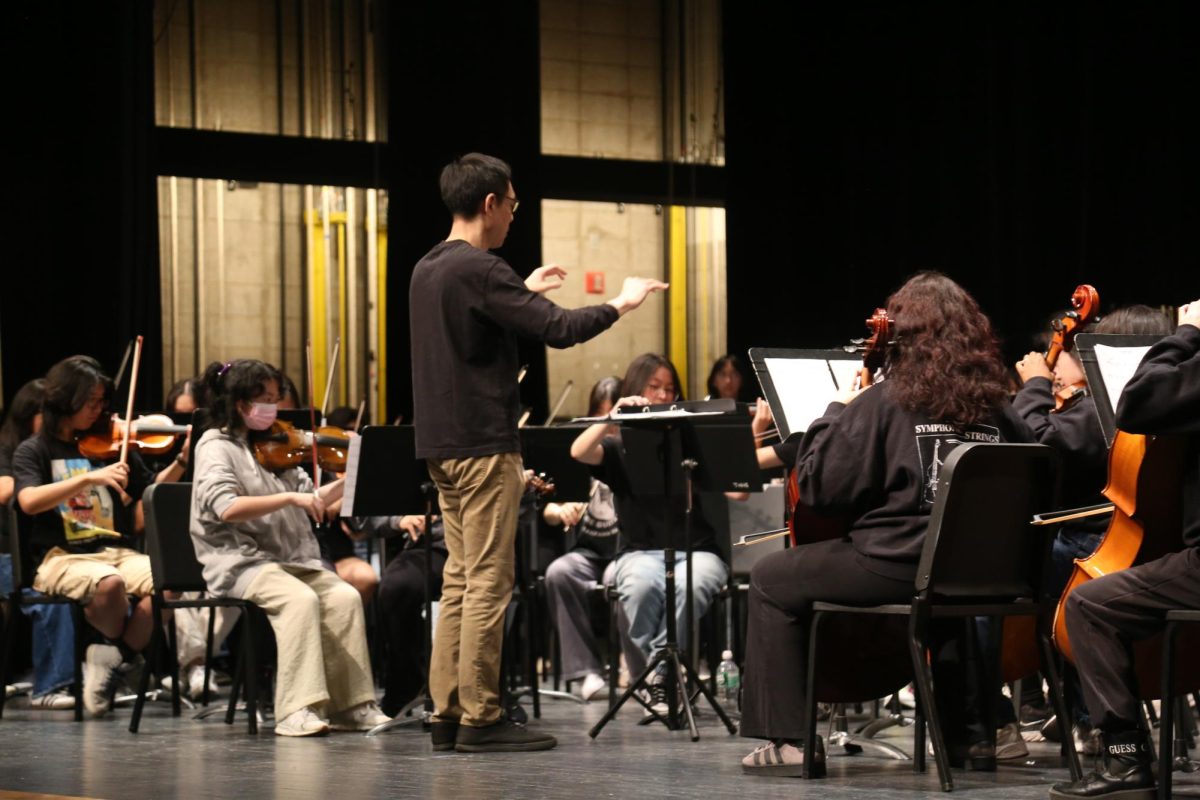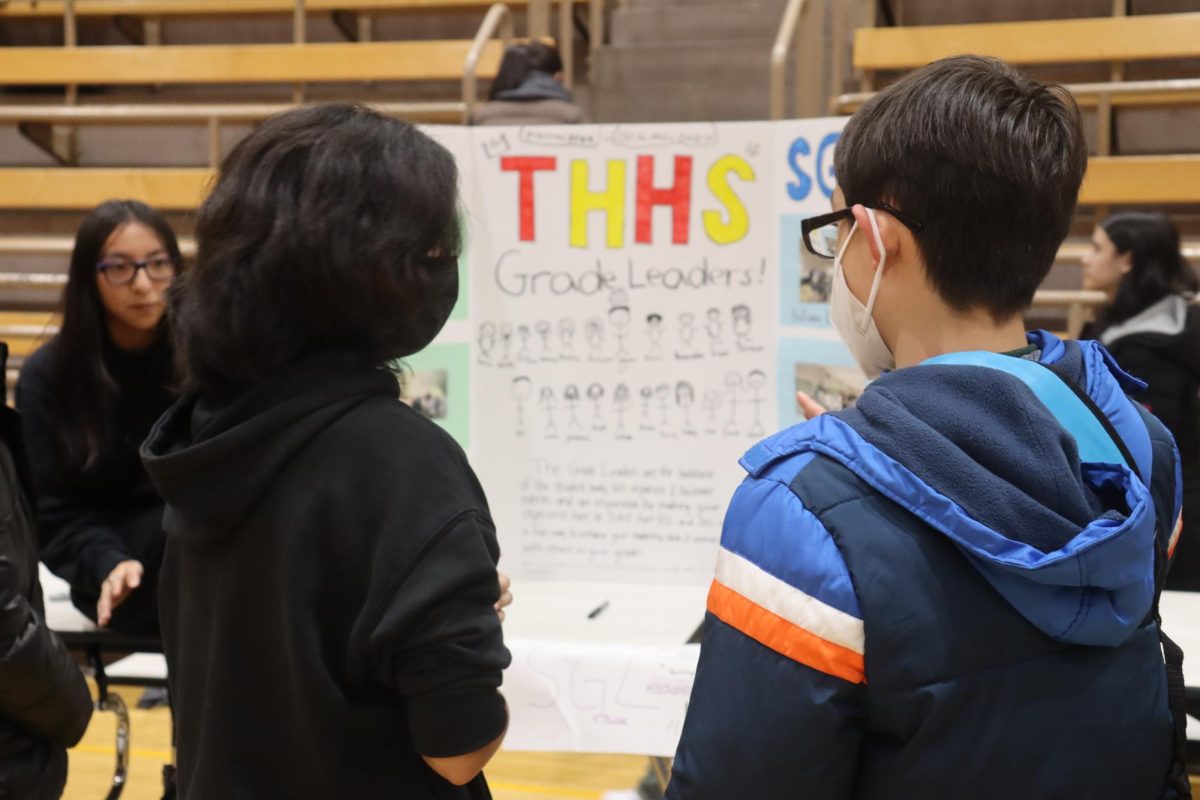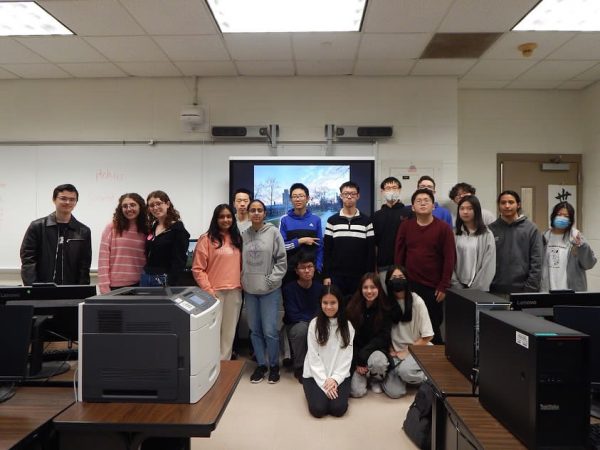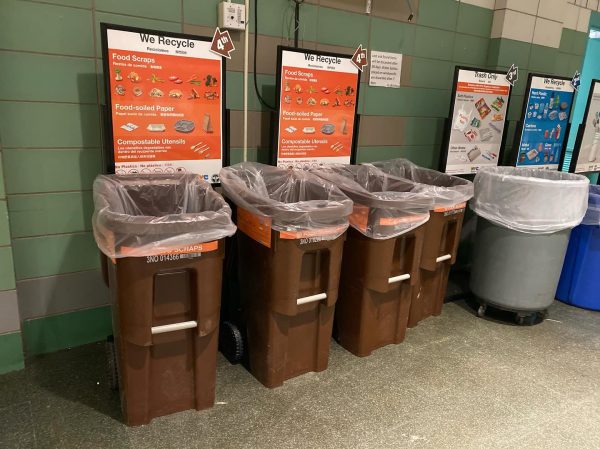Science Research Spotlight: project on Kelp Coverage in California wins awards
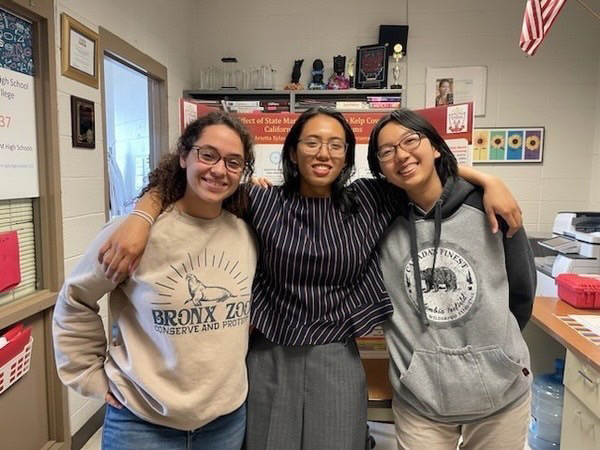
Arietta Xylas (left), Carolina Corcuera (middle), and Amy Jiang (right).

For the annual Terra NYC Stem Fair science research competition, Senior Arietta Xylas, junior Amy Jiang, and junior Carolina Corcuera conducted an investigation to determine whether State Marine Reserves have a positive link with kelp coverage. The group was successful in the competition, placing second at finals under their category, and winning additional awards.
In the marine ecosystem of Northern and North Central California, bull kelp is a keystone species. Due to consistent increases of ocean temperatures and increasing numbers of sea urchins, the kelp coverage in certain places has drastically diminished.
Carolina, Arietta, and Amy are members of the Science Research track, which is taught by science teacher Katherine Cooper and Assistant Principal of Math, Science and Technology Susan Brustein.
“In Science Research Year 1, I came across a document discussing kelp’s role in carbon sequestration, as well as their recent decline in oceans around the world,” said Carolina (who is also Science & Tech Editor for The Classic). “That made me want to find a way that would perhaps improve kelp population numbers.”
From there, Carolina and Amy searched for unique factors that could contribute to kelp decline. “We started off looking at heat, light, eutrophication, et cetera, but we realized we didn’t have the resources for an interactive study. After that, we tried looking at ways we could use online databases to get material instead,” said Carolina.
In the end, they decided to focus on overfishing, as they could use fishing laws to outline their control and experiment groups. The following year Arietta joined them as they began to figure out the project’s specifics, which would eventually be titled “The Effect of State Marine Reserves on Kelp Coverage in California Coastal Ecosystems.”
The project’s focus was bull kelp, also known as Nereocystis luetkeana, one of the two dominant kelp species in California. Like other types of kelp, bull kelp provides habitats and food for a wide variety of marine creatures, while simultaneously benefiting humans by preventing coastal erosion and supplying the local fishing industry with seafood. Kelp plays a major role in carbon sequestration, which is the process of capturing and storing carbon dioxide from Earth’s atmosphere; it does so by absorbing carbon using photosynthesis then sinking to the bottom of the ocean. This helps slow global warming by neutralizing greenhouse gas emissions.
Unfortunately, the population of bull kelp along the West Coast has been on the decline since 2011, causing devastation for the rest of the kelp forest ecosystem which is dependent on the kelp’s existence, hence its status as a keystone species. This decline was caused by a combination of environmental stressors, including increasing water temperatures, marine heat waves, algae blooms, and rises in the populations of herbivorous grazers, such as the purple sea urchin; the conjunction of the events led to the prolonged delay of kelp recovery.
The onset of the Sea Star Wasting syndrome is suspected to have correlated with the intense population boom of purple sea urchins, having depleted them of one of their main predators – the sunflower sea star. This has enabled them to multiply at levels that are detrimental to the ecosystem, requiring food consumption that outpaces bull kelp’s reproduction cycle, leading to the phenomenon known as a “urchin barren.” Here, the seafloor is covered with nothing but sea urchins, with barely to no kelp or vegetation present.
“Helping the bull kelp come back from all these events was something we all wanted to support,” said Carolina. “Something we read about that has historically impacted the populations’ recovery was overfishing.”
Arietta said, “Essentially, we wanted to see if kelp coverage would improve in areas where human activity was limited, as this would provide us with future avenues of conservation for kelp.”
In order to achieve this goal, the group collected kelp coverage data concerning eight areas organized into four pairs, with one State Marine Reserve (SMR) and one commercial area (referred to as ‘non-SMRs’) within each. State Marine Reserves are areas where human activity, particularly fishing, is banned by the state government; in contrast, the non-SMRs were places where people were known to fish frequently.
On the database Kelpwatch.org, the data for each of the eight areas was sorted using five different time categories. Then, for each location, the average annual kelp coverage and the average kelp coverage across all SMRs and Non-SMRs for July-September were calculated.
Inevitably, the group had to deal with sources of error. “The database was limited because it did not have coordinates, so the boundaries for our data had to be estimated by us,” said Arietta. “Additionally, Kelp Watch collects its data via Landsat satellite, so some data was obscured by cloud coverage, making the calculations not fully accurate.”
This data was then analyzed using a one factor ANOVA test and a two factor t-test, with the purposes of comparing developments within each time period and kelp coverage between each area in a pair, respectively.
“I think the main difficulty was just figuring out how to analyze the data and learning about the t-test and ANOVA, et cetera,” said Amy.
“Getting the work done on time for the contest deadline was really tiring, too; we often stayed up really late writing and developing foundation, especially in the beginning,” added Carolina.
Their charts show that in the most recent time period, kelp coverage in SMRs had finally surpassed that of non-SMRs . However, this cannot be certainly attributed to the SMR presence. “We didn’t know if there were other conditions that may have affected the expression of State Marine Reserves,” said Carolina. “But there is a reasonable possibility, just not really a likelihood at this point.”
A few months after submitting the paper to the Terra NYC Stem Fair preliminary rounds, the group was invited to participate in the finalists round at the NYU Tandon School of Engineering, where they won second place in the “Earth and Environmental Sciences Category” and three additional awards.
“It was an amazing experience and it was really fun to present with my team and meet all the other competitors,” said Arietta.
Carolina said, “I encourage everyone in Sci Research 1 in the future to continue the track because it offers a chance to explore different fields in science. Also, doing projects and meeting the judges at competitions is a great way to get to know what’s out there.”
The team also used this experience as a learning opportunity. “I have gained stronger time management skills, better research skills, and better analytical skills. Most importantly, I have learned how to stay self-motivated. It can be easy to get exhausted with the work, but the class really emphasizes the skill of knowing when to take a break and try again later,” said Arietta.
Your donation will support the student journalists of The Classic. Your contribution will allow us to purchase equipment, support our extracurricular events, celebrate our staff, print the paper periodically, and cover our annual website hosting costs.


